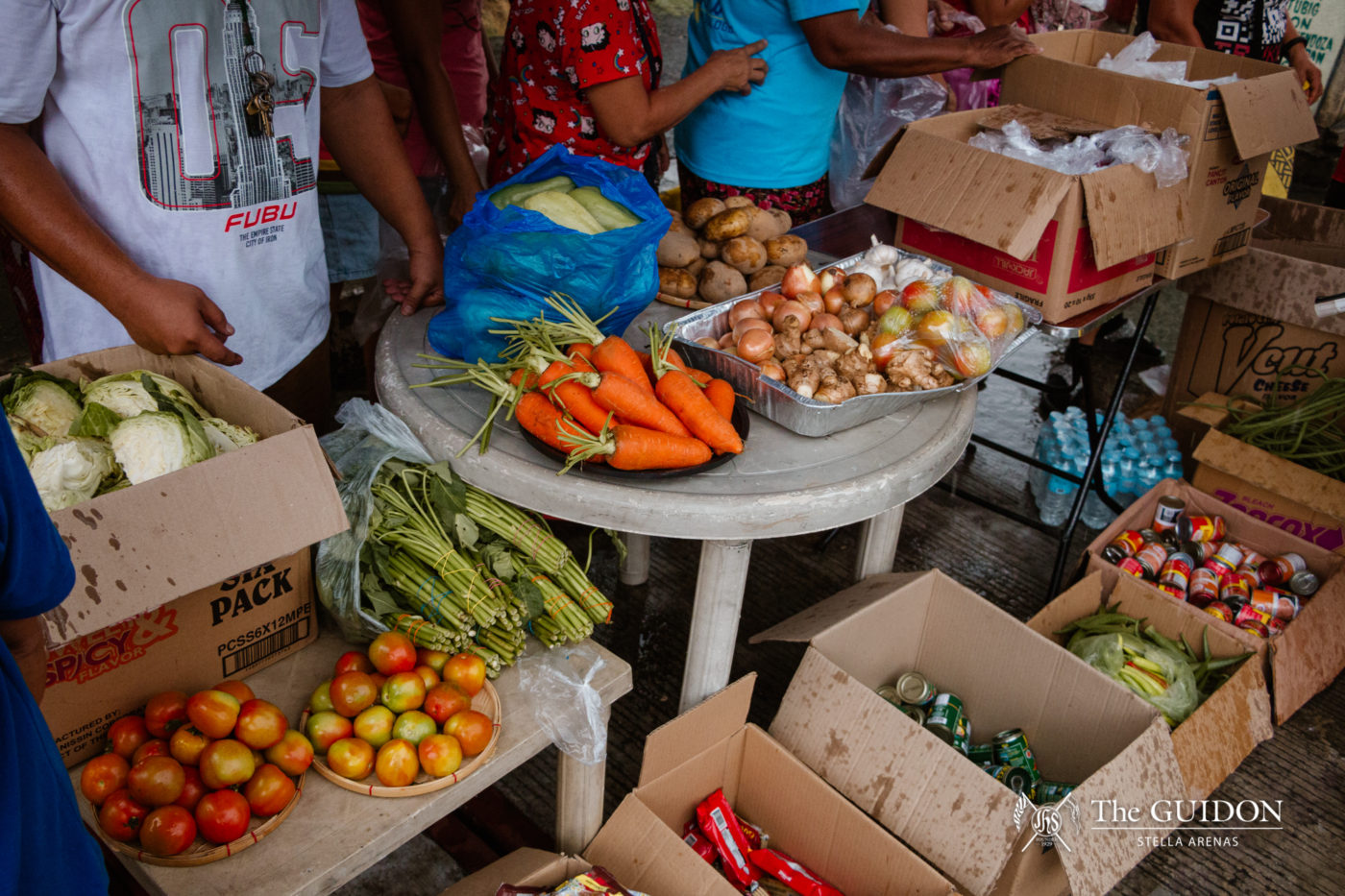When a small bamboo cart was set up in Maginhawa, a hundred more emerged in different corners of the country. The inspiring launch of the Maginhawa Community Pantry, led by Ana Patricia Non, symbolizes what Non calls unity born out of necessity.
Community pantries have significantly impacted the public and social sector with its goal to provide free essential goods for the underprivileged. The slogan “Magbigay ayon sa kakayahan, kumuha batay sa pangangailangan (Give what you can, take what you need)” encourages people not just to receive goods, but to give back as well.
With the participation of the private sector, non-government organizations, and religious groups in community pantries, more people have been donating, volunteering, and leading by example. These initiatives have not only helped the underprivileged in battling hunger, they have also allowed the agricultural sector to reap benefits as farmers are able to sell their surplus produce to different pantries.
While consumers and farmers mutually benefit from this multi-sector initiative, it cannot replace long-term solutions to the systemic issues that farmers face.
Crippled by crisis
Since the start of the lockdown, farmers nationwide have faced various crises: Logistical disruptions, destructive typhoons, and fluctuating food prices. These have made it more difficult for Filipinos to get food on the table, as well as for farmers to recover and sell their produce.
For Janvi Lazaro, whose father is a Masbate-based farmer, the entire farming process has been incapacitated along with the transportation system freeze. Many farmers rely on public transport to procure farming necessities and deliver their produce to urban areas. Erratic quarantine restrictions delay many of their usual routines.
Additionally, Lazaro shares that some farming necessities such as plant fertilizers have become more expensive. “Hindi katulad noon na nasa normal na presyo (It’s not like before when prices were normal),” he laments. “Masyadong hindi napapadali iyong proseso ng pagsasaka nila (The farming process does not get easier).”
These devastating effects to farmers saw various attempts from local government units, as well as agencies such as the Department of Agriculture providing food and cash aid to thousands of farmers. Credit assistance programs have also been launched for those in far-flung provinces.
Despite these efforts in aiding farmers during the pandemic, Human Rights and Environmental Journalist Nick Aspinwall explains that organic relief efforts are essential. “Government relief—sporadic cash payments of about $100, or food parcels—hasn’t come close to meeting people’s needs,” Aspinwall says.
Similarly, Lazaro believes that technological advancements are what the agricultural sector needs. “Hindi gaanong natustusan ng gobyerno iyong mga pangangailangan [sa pagsasaka] at [ang] pagbibigay ng modernong kagamitan (The government hasn’t been able to address various needs in farming, like the provision of modern equipment),” he says.
These experiences reveal the country’s slow pace in agricultural modernization and industrialization compared to other Southeast Asian countries—resulting in widespread poverty among Filipino farmers. While government and public efforts including financial aid and rescue buys have attempted to aid the agricultural sector, farmers are yet to find more sustainable ways to retail their produce effectively.
To support local
In light of the agricultural sector’s pains, the public has taken up calls to support local farmers by purchasing their surplus produce and contributing these items to community pantries. Suppliers like Rural Rising Philippines, who organize rescue buys from distressed highland farmers, serve as a bridge from the countryside to the communities.
Rural Rising co-founder Ace Estrada shares that it was their members who encouraged them to start offering community pantry packages, which contain 10 kilos of pre-packed fresh vegetables each. “[Rural Rising] merely executed it,” he says. “We’re not the leaders of our community. The members are the ones that are leading us; telling us where to go, who to help.”
According to Estrada, the Rural Rising’s partner farmers decide which vegetables to pack; they are subsidized for the labor they provide in preparing the community pantry packages. As of writing, Estrada says that they’ve received nearly a thousand orders for their packages.
“In this time kasi, our country relies on the countryside [and] on the backs of farmers,” he says. “It took a pandemic for us to realize that the most important part of our society are the farmers we marginalize and overlook.”
By getting the crops to various neighborhoods, suppliers rely on clients who are willing to support their small-scale operations. Pasig community pantry organizers Julie Bulaklak, MC Lorenzana, and Katrina Navarro share that they do their best to order from stakeholders that directly benefit the agricultural sector. For instance, the team purchased a thousand pesos worth of sweet potato from a farmer who posted their sale via the Community Pantry PH Facebook group.
Farmers benefit more from this farm to table approach as it ensures that the amount paid goes straight to the source, Navarro says. “I am emphatic about our community pantry as a form of peaceful and productive protest,” she asserts, noting the political undertones of the pantry phenomenon. Lorenzana seconds the sentiment, adding: “I’m not particularly sided to any [political] party; basta kung ano ang beneficial to the people, doon ako (I support whatever benefits the people.)”
Thinking long-term
Although the emergence of community pantries has allowed Filipinos to support local farmers, it is far from a sustainable solution. “Doing rescue buys is a band-aid solution. It doesn’t solve the problem of overproduction [which is] a problem farmers have each year,” Estrada says. Initiatives akin to Rural Rising have been providing more opportunities for farmers to earn regular wages and till land that they directly own. However, these initiatives can only go so far in addressing the agricultural sector’s systemic issues.
For Navarro, the government must also fulfill its role to better support farmers. “It’s like the system is rigged against those who need help the most. The government really should give our farmers a break,” he asserts. “Give them what they need [and] deserve in order to make the food we all need. Give back the land to the farmers para naman kumita sila nang marangal (so they can earn with dignity).”
In the meantime, agricultural initiatives and pantry organizers serve as a bastion of community engagement geared towards addressing society’s most pressing needs. “One table [and] one signage is all it takes to start,” Bulaklak encourages.Nonetheless, tackling the sector’s issues will ultimately entail sustaining the support for local farmers even beyond the pandemic’s context. “Kahit hindi sa kabila ng pandemya ay sana po masolusyunan nating lahat at matulungan natin yung mga magsasaka (I hope we can all provide help and solutions for farmers even beyond this pandemic),” Lazaro adds.




